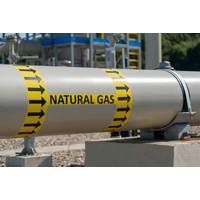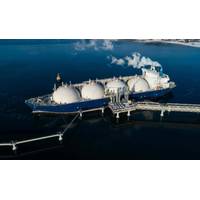Low Prices Threaten Arctic, UK Fields
Over 1 bln barrels could stay in the ground. Arctic Norway, mature British fields most vulnerable. British, Norwegian oil investments set for sharp falls but ongoing UK projects, Sverdrup to go on.
Big oil and gas finds in waters along Europe's northern edge may remain undeveloped now that oil prices have dropped, keeping potential supply of over a billion barrels of oil equivalent out of the market for the foreseeable future.
Discoveries in Arctic Norway could stay dormant, while mature British fields could face early closure and frontier exploration in areas such as Greenland could be called off as oil companies cut capital spending by up to a fifth.
Projects such as Statoil's $15.5 billion Johan Castberg in the Barents Sea and smaller finds by Shell, OMV and others were once expected to open new oil provinces.
They now face delays, cancellations or a radical redesign as oil prices at $85 per barrel make them unprofitable.
Norway, Western Europe's biggest oil and gas producer, is among the most vulnerable because of its already high costs and its recent push into Arctic waters, not far from the edge of the winter sea ice, where costs are among the highest in the sector.
"We are looking at each project and the project that is most economically viable," Runi Hansen, Statoil's Arctic chief said. "If the Arctic projects are not commercially viable, we are not going for it."
If oil prices are significantly lower over the next two years, "we believe that about 1 billion barrels of oil and gas resources from the Norwegian continental shelf are now at risk of sanction delays," said Espen Erlingsen, an analyst at Oslo-based oil consultancy Rystad Energy.
"This could reduce (Norway's) oil supply potential by about 400 thousand barrels per day in 2025 if oil prices stayed at a level of $80 per barrel," he added. Norway produced 1.46 million bpd of oil in 2013.
Statoil's Johan Castberg, Norway's biggest Arctic find with up to 600 million barrels of oil, has already been delayed by more than a year.
Production from the field would break even at about $80 to $85 per barrel, Nordea Markets estimated, due to its remote location and need for extensive infrastructure.
A recent tax hike has made the project even more expensive, but the government has ruled out mitigating measures.
"I'm not a politician who believes that political decisions make something profitable," Oil and Energy Minister Tord Lien said. "The main responsibility has to remain with the industry. We didn't create the high costs."
Expensive projects in harsh British waters West of Shetland, with planned investment of over 15 billion pounds ($24 billion) in coming years, are likely to continue because many are already too far advanced for oil majors to pull the plug.
If low oil prices persist, however, they will erode margins and extend companies' financial pain.
Goldman Sachs estimates that Europe's integrated oil companies require an oil price of $122 per barrel to be free-cash-flow neutral in 2015 given their current capital spending budgets.
To achieve a 4.5 percent free cash-flow yield by 2018, capital spending would need to fall by 13 percent at an oil price of $90 per barrel and by 20 percent if oil falls to $80.
ARCTIC RISK
In the Barents Sea, a casualty may be OMV's Arctic Wisting discovery with 150 million barrels of oil equivalent, which could need $110 per barrel to break even, according to Rystad Energy.
OMV has said it needs to find more resource around the field and does not expect an investment decision before 2017 or 2018.
Lundin's Alta and Gohta fields also may need close to $80 just to break even, the Rystad consultancy estimated.
"The biggest worry is the Barents Sea," said Thina Margrethe Saltvedt, an oil analyst at Nordea Markets. "You can't start one of the projects alone."
"This is a high-cost area, and they have to do a lot of investment in the infrastructure," she said.
South of the Arctic circle in the Norwegian Sea, a big project at risk is Statoil's $4.5 billion investment to extend the life of the Snorre field by adding a new platform. The project was already in doubt when oil prices were at $100, and any delay would further erode its viability as the pressure in the field drops.
A decision on the project, planned for early next year, has been delayed to the fourth quarter of 2016.
Smaller projects also in the Norwegian Sea such as Shell's Linnorm in the Norwegian Sea and RWE's Zidane, which have already been delayed, could stay on ice indefinitely, analysts say.
The only investment that will go ahead without a doubt is Statoil's $18 billion Johan Sverdrup in the North Sea, where costs are estimated at less than $40 a barrel. The field could hold up to 2.9 billion barrels of oil equivalent and produce up to 650,000 barrels per day after its start-up in 2019.
MATURE UK
On the British side of the North Sea, mature fields are even more at risk as their fixed costs rise due to the need for increasing maintenance work at older platforms, while revenues are declining due to lower output and falling oil prices.
"The recent fall in the oil price ... makes it much harder to attract new investment into the basin or to sustain much of the mature infrastructure," said Mike Tholen, the economics director industry trade body Oil & Gas UK.
Tholen said the government needed to do its part in reducing taxes to improve the region's competitiveness.
Costly future developments such as Chevron's Rosebank and Statoil's Bressay have already been called off, but developments of newly discovered fields that are too far along to be stopped will simply go ahead with lower yields.
In British waters, oil investments peaked at 14.4 billion pounds in 2013 and were expected to be half that much by 2016, even before the recent oil price plunge. Norwegian oil investments, seen hitting a record $34 billion this year, could fall 15 percent next year.
"Oil majors started to realise that their business model doesn't work unless the oil price continues to rise," Torbjoern Kjus, an oil analyst DNB bank, said.
By Balazs Koranyi and Gwladys Fouche






